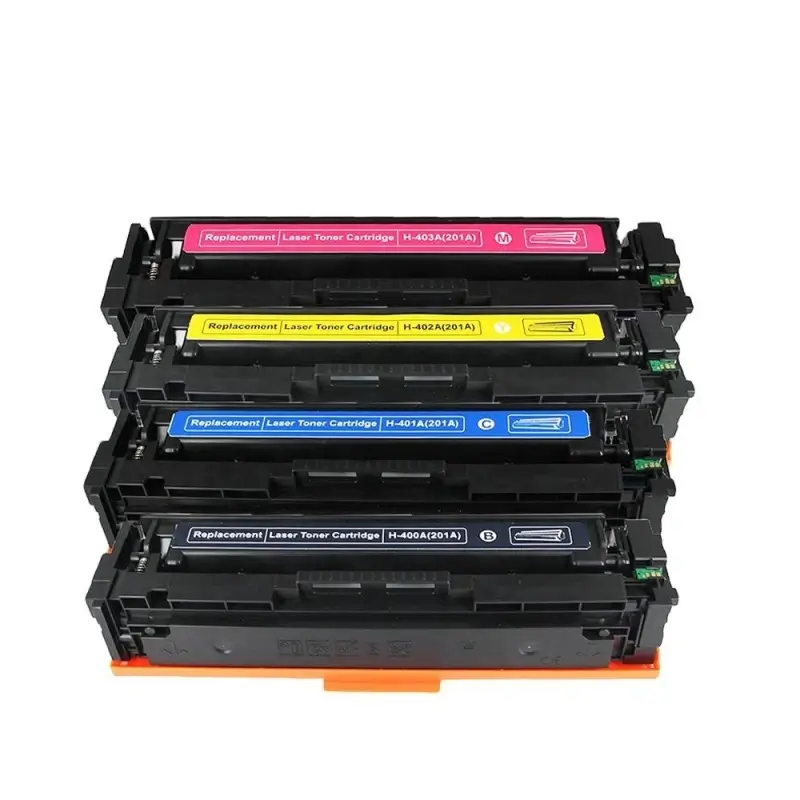Improper storage of toner cartridges can lead to defective products. How to store printer cartridges when not in use?
Printers are now essential office equipment, and many companies keep one or more toner cartridges as spares for laser printers. Recently, a user reported that several spare cartridges had problems, producing faint and fuzzy prints. The first cartridge printed fine, but the remaining brand-new cartridges were all defective. This is due to improper storage!
Improper Storage 1: Leaving toner cartridges in high-temperature, high-humidity, or cold environments
In hot summer weather, leaving toner cartridges in a sunny, humid, or hot place, or leaving them outdoors in cold winter places like windowsills, or even forgetting them in the trunk of a car, can affect the lifespan and quality of toner cartridges, even if they are unopened. The correct solution is to store them in a dry, well-ventilated area with a constant temperature and humidity.
Improper Storage 2: Opening the Box and Leaving the Toner Cartridge Bare
Whether out of curiosity or other reasons, removing the packaging and seals immediately before use can significantly shorten the life of the toner cartridge. The seal and anti-static bag on the toner cartridge effectively protect it from moisture and other environmental damage. Removing the seal prematurely can cause the toner to clump, which can directly affect print quality. The correct approach is to open the packaging, cut the anti-static bag, and remove the toner cartridge just before installation and use.
Improper Storage 3: Touching the Photosensitive Drum
Exposing the photosensitive drum to strong light or touching it with your hands can damage it and affect print quality. The OPC drum is one of the most critical components of a toner cartridge and should be carefully protected. Keep it away from dust, direct sunlight, and even your hands.
Improper Storage 4: Keep These “Neighbors” Away
When storing, avoid contact between the toner cartridge and corrosive chemicals or dusty environments. This can cause chemical changes in the cartridge, making it less suitable for storage. Furthermore, the cartridge should be kept away from magnetic materials. These can also significantly shorten the lifespan of the cartridge. Placing the cartridge near magnetic materials can easily cause magnetization.
Our final analysis revealed that:
The customer’s toner cartridge had become damp due to improper storage. This resulted in blurred prints or copies, or partial “white” prints. The sample prints provided by the customer were lightly but evenly printed, indicating that the moisture was not too severe. Therefore, we had the customer blow hot air on the inside of the printer and the toner cartridge for several minutes before installing the printer, and then shake the cartridge. After installing the printer, the print quality improved significantly, and after about a dozen copies, the cartridge was printing normally.
Note:
If the toner remains light after printing multiple pages (without improvement), it indicates that the toner has clumped due to moisture. It is best not to use the toner cartridge again and have it repaired by a professional or replace it with a new one.
Tips:
1. When the temperature and humidity vary significantly between indoor and outdoor: Generally, the temperature should be between 15°C and 30°C, and the relative humidity should be between 20% and 80%. Excessively high or low temperatures and humidity can cause print defects. Therefore, please allow the printer and toner cartridge to remain within the specified temperature and humidity range for at least 2 hours before printing.
2. If a toner cartridge that has been stored for a long time exhibits slight defects such as graying or light color after printing or after an overnight delay, print at least 5 more pages before using it again. If text becomes unclear after a period of use, replace the toner cartridge or refill the toner.


Leave A Comment